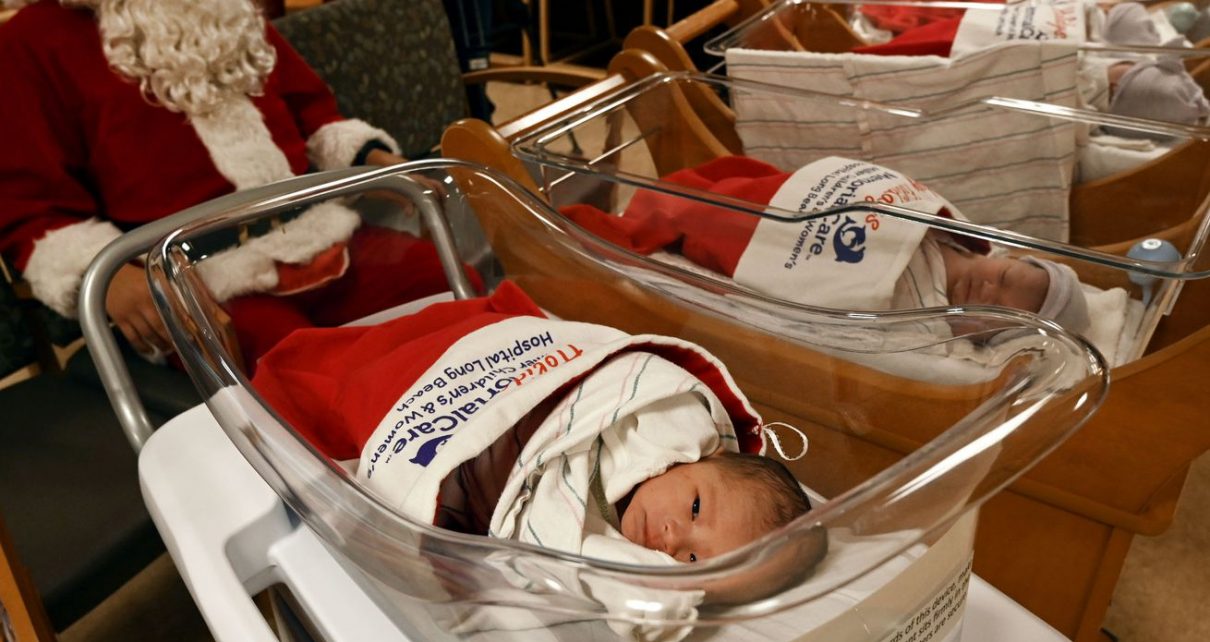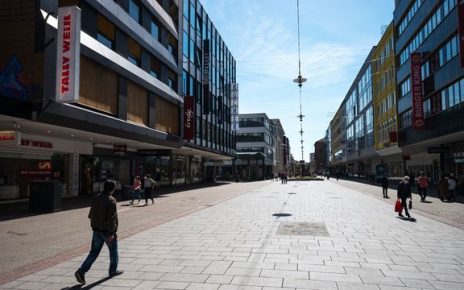
The pandemic has only accelerated a decline in US birth rates, even as immigration has plummeted.
At the stroke of midnight on January 1, New York City welcomed its first new inhabitant of 2022: Leyla Gessel Tzunun Garcia, born as the new year began at Coney Island Hospital in Brooklyn.
Given changing trends around population and fertility, though, there’s less competition to become the first baby of the new year than there used to be. Fewer babies were born in New York City in 2020 than any year on record, while the US population grew by just 0.1 percent in the year between July 2020 and July 2021, with the country adding just 392,665 people from net migration and births over deaths.
That’s the lowest numeric increase since the Census Bureau began making annual population estimates at the beginning of the 20th century. On a percentage basis, it’s the lowest growth in the nation’s history.
Increased deaths from the pandemic plays a role, as do inevitably creeping mortality rates in an aging population. But the primary cause is declining fertility rates, as fewer Americans have children, and those that do tend to have smaller families. The total fertility rate in the US — an estimate of the average total number of children a woman will have over her lifetime — has declined from 2.12 in 2007 to 1.64 in 2020, well below the 2.1 needed for a population to replace itself without immigration.
Nor is this merely an American phenomenon. By one estimate, half the world’s population lives in countries with below-replacement-level fertility, and nations like Japan — with very low birth rates and little immigration — are already experiencing population decline.
China, which became a symbol for population control with its coercive one-child policy, now has a fertility rate even lower than Japan’s, and the government is struggling to convince shrinking numbers of young people to have more children — or any children at all.
Overpopulation isn’t what you think
Despite that, global population at the start of 2022 was nearly 7.87 billion, and should cross the 8 billion mark over the next few years. For those worried about climate change, fewer people — especially in some of the richest and most carbon-intensive countries in the world — might seem like an unmitigated good.
Indeed, there’s evidence that a growing number of young people are opting out of having children specifically because they’re worried about what life would be like for their offspring in a hot and chaotic world. Such concerns may be more intense these days, but they aren’t new — human overpopulation has been a major concern for the environmental movement for decades.
The freedom to choose desired family size should be a human right, but there’s some evidence that many people aren’t having as many children as they would like to. Surveys in the US show that the stated ideal number of kids in a family has stayed a little above 2.5 since the mid-2000s, even as actual fertility rates have declined. Whether because of delayed partnership and marriage, economic concerns, or changing lifestyle preferences, there are forces keeping population growth below the level that people say they want.
And while population growth plays a role in climate change — it’s called anthropogenic warming for a reason — it’s not as big a factor as we might expect, as Sigal Samuel wrote for Future Perfect in 2020. Consumption of the resources that lead to carbon emissions matters more to climate change than population growth on its own, and those resources are primarily consumed by a relatively small number of wealthy people around the world.
Change those consumption patterns — through a mix of better efficiency and new technologies that don’t emit carbon — and there’s room enough to keep growing the population without cooking the planet.
The reality of slower population growth
Slower population growth might paradoxically make it harder to pull off that transition, however. Fewer babies make for aging countries, which slows down economic growth and holds back innovation. It can be harder to build support for future-focused policy in a country with fewer children — just look at the gerontocracy that is the US government, with its 79-year-old president and its octogenarian legislative and judicial branches.
And while it might seem as if slowing or even declining population would at least reduce crippling housing prices, that might not be the case. Conor Sen notes in Bloomberg that as people flee dozens of shrinking metros like Toledo or Syracuse, they’re likely to crowd into those cities that are still growing, like Austin or Raleigh, further pushing up housing prices there.
Crafting policies to encourage people to have more children is difficult and expensive, as country after country has learned. That’s why for nations like the US that have historically boosted their population with immigration, encouraging more migrants is likely the fastest and most resilient way to keep population growth vibrant.
But while last year marked the first time in US history that net international migration added more people to the population than net births, the number of people moving to America has still fallen drastically over the last several years, from over 1 million in 2016 to fewer than 250,000 between July 2020 and July 2021. That’s a function of both Trump-era immigration restriction policies and the lasting effects of the pandemic. Reversing that decline should be a national priority, and one that, unlike increasing births, is absolutely within reach.
We may have averted the dystopian, crowded future prophesied in books like The Population Bomb or films like Soylent Green (the latter, featuring a world so overpopulated that dead bodies are converted into food, set in none other than the year 2022). But a good future is still an abundant one — and that should include people as well.
A version of this story was initially published in the Future Perfect newsletter. Sign up here to subscribe!





